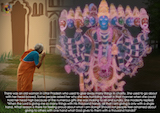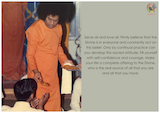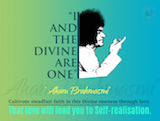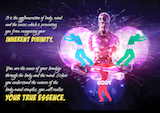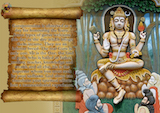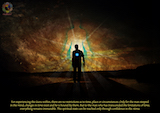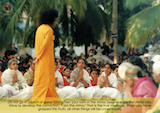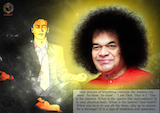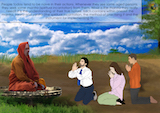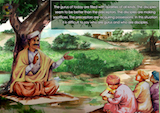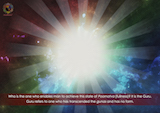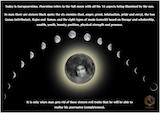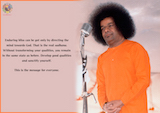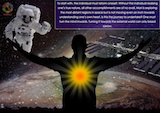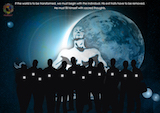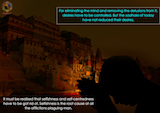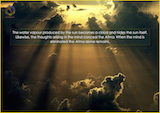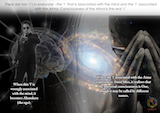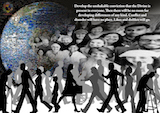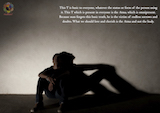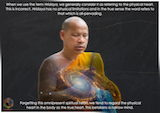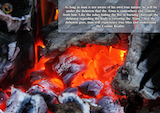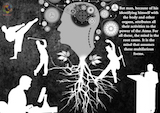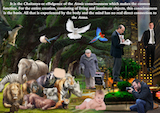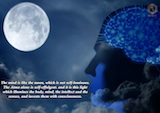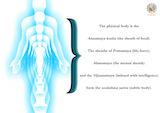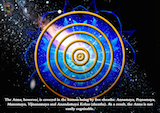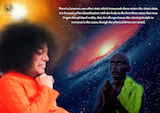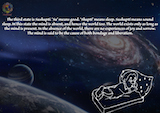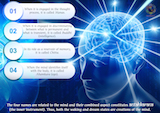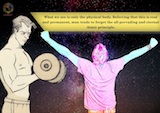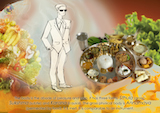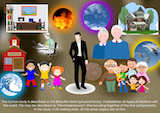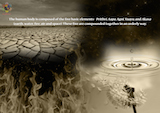|
|
| 'Like' us on Facebook | Follow us: |
Posted on: Jul 15, 2016
SUMMER SHOWERS 1990 ILLUSTRATED (Part 17)
SSI - 16.07.2016 |
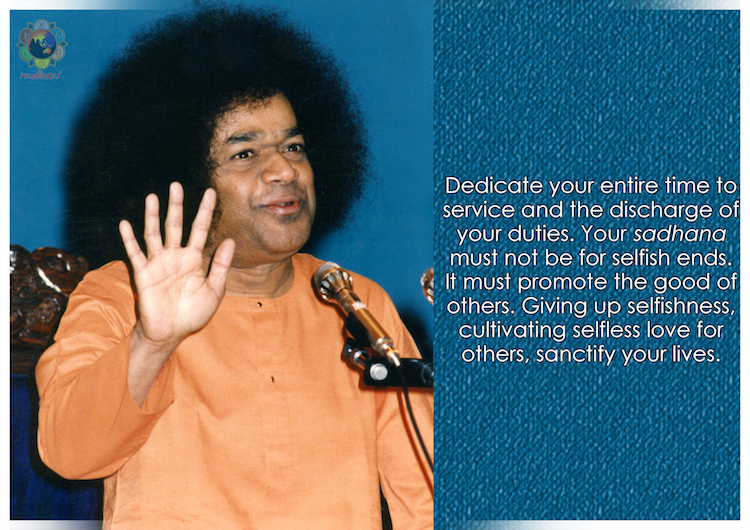 |
Bhagawan would often say, “My life is My Message.” A simple understanding of this declaration is that He lives every day the message He teaches. One other meaning one could draw is that, ‘His message is His life’! That is, the message that Bhagawan gave is the very life essence of His descent as an Avatar. And the fact that even today, we can go through the thousands of discourses He delivered is in itself a sign of His benediction upon us.
And among the discourses Baba delivered, those that He gave as part of the Summer Course series are even more special. This is because often these are a set of discourses centered around a specific theme, elaborated gradually. These are a treasure mine for any sincere spiritual seeker. So in our attempt to encourage more people to dwell deeply into these divine discourses, and contemplate on the message therein, we begin with prayers, a new series today.
In March 2013, with the same motive in mind we began a radio series entitled Shravanam Mananam Nididhyasanam. In this live show we began going through the 1990 Summer Course discourses, and needless to say we were overwhelmed by their profundity. So we now wish to offer these discourses to our readers, in this new format. We will try to pictorially depict the messages in these discourses in the form of a poster. These will be sent everyday to all our Sai Inspires subscribers as a link along with the Thought for the Day (If you are not a subscriber yet, please do subscribe). And after these posters are dispatched, they will be added to this page, on the right hand side. You can view, download and even print and use them if you so wish. The current discourse is not part of the Summer Course 1990, but it is the discourse Bhagawan gave on the occasion of Guru Poornima in 1990. This discourse too was taken up for discussion in the radio programme, as in many ways this discourse is like a summary to the Summer Course of that year.
We pray to Bhagawan to bless and guide this new endeavour of ours. And we invite you all to partake of and imbibe our Master’s ethereal message.
The Guru Within
Embodiments of Divine Love! As long as a dream lasts, all that is experienced, heard or seen in it appears as real. Likewise, in samsara (worldly existence), filled with likes and dislikes, everything seems real till the dawn of Jnana (wisdom). When one attains the state of Supreme Realisation, all that happens in the world appears as a dream. The human body is composed of the five basic elements - Prithvi, Aapa, Agni, Vaayu, and Akasa (earth, water, fire, air and space). These five are compounded together in an orderly way. The human body is described as the Bhautika Sarira (physical body). It establishes all types of relations with the world. This may be described as "Pancheekaranam" (the bonding together of the five components). In the body, in its waking state, all the sense organs are active. The body is the abode of pleasure and pain. It has three forms: Sthoola (gross), Sookshma (subtle) and Kaarana (causal). The gross physical body is Annamaya (permeated by food). It is inert. It is comparable to an instrument. What we see is only the physical body. Believing that this is real and permanent, man tends to forget the all-pervading and eternal Atmic principle. The five pranas (vital breaths), the mind, the intellect and the ten sense organs (of perception and action) constitute the sookshma-sarira (subtle body). It functions in the dream state. In this state, the individual is oriented inwards. In it, man creates for himself a new world. The dream is itself the proof of its reality. It is self-constituted with no external relations. In the dream state, everything is created by the mind--forms, sounds and taste, which are experienced without any physical basis for them. This entire experience is limited to the individual concerned. If, for instance, ten persons are sleeping in one room, each person's dream is unique to himself. Each one's actions in the dream are unique to himself. There is no relationship between the dream and the waking state. One individual has a dream in
which his friend harasses him in many ways. If after waking up in the morning he accosts his
friend and asks the latter why he harassed him, the friend replies: “You madcap! I have not seen
you at all!" This means that the friend in the dream and the troubles he gave are all self-created
by the dreamer. All other dream experiences are also self-created. Hence, all the experiences in
dreams are confined to the individual concerned and have no connection with others in the real
world. The joys and sorrows experienced in the dream are the stuff of the dream state. It is in the
dream state that one goes through the consequences of good and bad actions in previous lives.
This means that the experiences are related to the sookshma sarira (subtle body). In this, the
mind is the most important factor. It is the mind that creates everything. The third state is Sushupti. SU means good. Shupti means sleep. Sushupti means sound sleep. In this state the mind is absent. When the mind is not present the world also is absent. In the absence of the world, there are no experiences of joy and sorrow. The world exists as long as the mind is present. Joy and sorrow are experienced through contact with the world. Hence, the world is associated with joy and sorrow. The mind is said to be the cause of both bondage and liberation. There is, however, one other state which transcends these states: the Atmic state. It is because of his identification with the body in the first three states that man forgets his spiritual reality. But, for all experiences the Atmic principle in everyone is the cause, though the physical forms are varied. Man is a prey to ignorance because, forgetting his Atmic reality, he identifies himself with the mind-body complex. The waves appearing in an ocean appear as different from each other. But they consist of the same water. Likewise, though man appears in innumerable forms, all these are like the waves appearing on the ocean of Sat-Chit-Ananda (Being-Awareness-Bliss). Names and forms may be different but the basis is the same. The Atma, however, is covered in the human being by five sheaths: Annamaya, Pranamaya, Manomaya, Vijnanamaya and Anandamaya Kosas (sheaths). As a result, the Atma is not easily cognisable. The physical body is the Annamaya kosa (the sheath of food). The sheaths of Pranamaya (life-force), Manomaya (the mental sheath) and the Vijnanamaya (imbued with intelligence) form the sookshma sarira (subtle body). The Anandamaya kosa is the Kaarna sarira (causal or seed body). Although it has the name Anandamaya (blissful), it is not real bliss. It is the blissful state of the Atma that is reflected as an image in the sheath of Bliss (the causal). The mind is like the moon, which is not self-luminous. The Atma alone is self-effulgent. It is this light which illumines the body, mind, the Buddhi and the senses and invests them with consciousness. It is this Chaitanya (Atmic consciousness) which makes the cosmos function. For the entire creation, consisting of living and inanimate objects, this consciousness is the basis. All that is experienced by the body and the mind has no real connection with the Atma. Relying on the light coming from the sun, many people perform different actions. Some may do good deeds and some others may be indulging in bad actions. The Atma is unaffected by the consequences of these actions, just as the sun is not affected by the activities done with the help of sunlight. The Sun is a witness. Likewise the Atma also is a witness to what is done by the body, mind and other organs. But man, because of his identifying himself with the body and other organs, attributes all their activities to the power of the Atma. For all this, the mind is the root cause. It is the mind that assumes these multifarious forms. For instance, if a person builds a house, he erects within it a bedroom, a drawing room, a kitchen and so on. All these separate rooms are for his comfort. But if the separate walls are knocked down, only one hall remains. Likewise if the walls created by the mind are removed the Atma alone will be experienced. If man embarks on the process of casting off one by one the five sheaths which envelop the Atma, he will experience his true Self. This process consists in the practice of Sravana, Manana and Nididhyaasana (hearing, reflection in the mind, and meditation on the Divine). The body, the mind and the senses are merely like the husk which encases the grain. When the husk is removed, the rice alone remains. As long as man is enveloped in this husk, he cannot escape birth and death. When the husk (in the form of the five sheaths) is cast off, man is freed from rebirth, just as the rice without husk cannot sprout. Even as you do not need a lamp to see the sun, there is no need to search for the Atma when it is omnipresent. The Atma shines eternally. No other sadhana is required to recognise it. As long as man is not aware of his own true nature, he will be under the delusion that the Atma is somewhere else remote from him. Like the ashes hiding the fire in burning charcoal, the delusion regarding the body is covering the Atma. Once the delusion goes, man will experience true bliss and understand the Cosmic Reality. In this context, the significance of the use of the term "I" by everyone should be rightly understood. Without the "I", the world will have no existence. What is this "I" ("nenu" in Telugu)? It is the basis (Uniki). Because the same basic entity exists in all beings, it is called Atma. It is also called Brahmam. Another name for it is Hridaya (the spiritual heart). It is also called Aham ("I"). All these different names refer only to the Atma. When we use the term Hridaya, we generally consider it as referring to the physical heart in the body. This is not correct. Hridaya has no physical limitations. Hridaya in the true sense of the word refers to that which is all-pervading. Forgetting this omnipresent spiritual heart, we tend to regard the physical heart in the body as the true heart. This betokens a narrow mind. In ordinary parlance we use the term Aham ("I") in every context. This Aham is Brahmam. When you declare, "I am a householder," the first reference is to yourself as "I." Another says, "I am a sanyasin." Here, again, the "I" comes first. Similarly in other references, the "I" comes first and then the description follows. When you separate the "I" from the person who used it, the "I" alone remains distinct from the different individuals. This shows that the "I" is basic to everyone, whatever his status or form. This "I" which is present in everyone is the Atma, which is omnipresent. Because man forgets this basic truth, he is the victim of endless sorrows and doubts. What we should love and cherish is the Atma and not the body. People have love for their parents, wife, children and other kinsfolk because of the relationships. But these relationships are essentially impermanent. In cultivating: these ephemeral attachments, men are failing to love the Atma, which is ever present and is the source of lasting bliss. If you have doubts regarding Atma, it is because you have no steadfast love for the Divine. To develop firm love for anything, you have to get the conviction that "it is mine." Unless you acquire such a conviction regarding the Atma, you cannot become a Sthithaprajna (a man of steadfast wisdom). You will not achieve real bliss. You cannot reach the permanent state of Self-Realisation. Develop the unshakable conviction that the Divine is present in everyone. Then there will be no room for developing differences of any kind. Conflict and disorder will have no place. Likes and dislikes will go. Once you direct the mind towards the Atma, you have learnt the supreme mantra: "Aham Brahmaasmi" (I am the Brahmam). Whatever you do, eating or walking or seeing or speaking, do it with the Atmic consciousness. There are two "I's" in everyone--the "I" that is associated with the mind and the"I" associated with the Atma. Consciousness of the Atma is the real "I." When this "I" is wrongly associated with the mind, it becomes Ahamkara (the Ego). When the "I" associated with the Atma experiences Atmic bliss, it realises that the universal consciousness is One, though it may be called by different names. When you eliminate the Anaatma-bhaava in you (that is, the body consciousness), you will have the Atma-bhaava (consciousness of the Universal), within you. Without this consciousness all sadhanas are of no avail. The water vapour produced by the sun becomes a cloud and hides the sun itself. Likewise, the thoughts arising in the mind conceal the Atma. When the mind is eliminated the Atma alone remains. For eliminating the mind and removing the delusions from it, desires have to be controlled. But the sadhaks of today have not reduced their desires. It must be realised that selfishness and selfcentredness have to be got rid of. Selfishness is the root cause of all the afflictions plaguing man. If the world is to be transformed, we must begin with the individual. His evil traits have to be removed. He must fill himself with sacred thoughts. To start with, the individual must reform himself. Without the individual realising his true nature, all other accomplishments are of no avail. Man is exploring the most distant regions in space, but is not moving even an inch towards understanding his heart. Is this the journey man should undertake? He must turn the mind inwards. Turning the mind towards the external world can only breed sorrow. Enduring bliss can be got only by directing the mind towards God. That is the real sadhana. Without mental transformation all other changes are meaningless. Without changing your qualities, you remain in the same state as before. Develop good qualities and sanctify yourself. This is the message for everyone. Today is Gurupoornima. Poornima refers to the full moon with all his 16 aspects being illumined by the sun. In man there are sixteen black spots: the six enemies (lust, anger, greed, infatuation, pride and envy), the two Gunas, Rajas and Tamas, and the eight types of mada (conceit) based on lineage and scholarship, wealth, youth, beauty, position and penance. It is only when man gets rid of these sixteen evil traits that he will be able to realise his oneness with the his poornatva (Divine). Who is the one who enables man to achieve this state of Poornatva (fullness)? It is the Guru. Guru refers to one who has transcended the gunas and has no form. The gurus of today are filled with qualities of all kinds. The disciples seem to be better than the preceptors. The disciples are making sacrifices. The preceptors are acquiring possessions. In this situation it is difficult to say who are gurus and who are disciples. People today tend to be naive in their actions. Whenever they see some aged persons, they seek some mantra (spiritual message) from them. What is the mantra they really need? It is the understanding of their true nature. This mantra is within them. Each contains within himself the mantra, tantra and yantra (the spiritual message, the method of practising it and the instrument for implementing it). Your process of breathing contains the mantra you need: “So-Ham", "SoHam". (Bhagavan demonstrated how this should be done). "I am That," "That is I." This is the mantra. What is the yantra (the instrument)? It is your physical body. What is the tantra? Your heart! When you have in you all the three, why go to anyone for a message? It is a sign of weakness and ignorance. Your true guru is God alone. He transcends all gunas. He is beyond all forms. He is the only one who can dispel the darkness of ignorance and light the lamp of Prajnaanam (Supreme Wisdom). It is a mark of ignorance to go after nondescript preceptors and seek messages from them. When they are wallowing in bondage themselves, how are they going to free you from bondage? How can one who is filled with delusions himself rid you of your delusions? Can one who is begging for food relieve your hunger? Do not go in search of gurus. Strengthen your faith in the Atma. Seek to enjoy the Atmic bliss. Strive to develop the conviction: "I am the Atma." That is the true message. When you have grasped this Truth, all other things will be unnecessary. For experiencing this Guru, there are no restrictions as to time, place or circumstances. Only for the man steeped in the mind, changes in time exist and he is bound by them. But to the man who has transcended the limitations of time, everything remains immutable. This spiritual state can be reached only through confidence in the Atma. Gurupoornima is observed as a day for honouring the Guru. Some types of gurus welcome this day as the day which brings them income. They are an inferior breed. The real Guru is only one. He is the One, the God of gods, who is hailed as father, mother, teacher, knowledge and wealth and all else. He is the Supreme whom you must seek by your sadhana. God alone can transform your spiritual efforts into a transcendental experience. You have the vision of the Divine (saakshaatkaara). The vision does not come from outside. It is within you, because the Divine is omnipresent. Only the person who considers himself separate from God will have the feeling that the vision of God comes from outside. God is everywhere. You are God. It is the agglomeration of body, mind and the senses which is preventing you from recognising your inherent divinity. You are covering yourself in this manner. You are the cause of your bondage through the body and the mind When you understand the nature of the body-mind complex, you will realise your true essence. It is enough if you develop the conviction that you and the Divine are one--"Aham Brahmaasmi." Cultivate steadfast faith in this Divine oneness through love. That love will lead you to Self-realisation. Wherever you may be and whatever you do, regard yourselves as instruments of the Divine and act on that basis. You need not wait for a whole year to observe Gurupoornima. Treat every moment of your life as being intended for dedication to the Lord. This is the way to experience the Divine all the time at all places. This is true Saakshaatkaara. Serve all and love all. Firmly believe that the Divine is in everyone and constantly act on this belief. Only by continual practice can you develop this sacred attitude. Fill yourself with self-confidence and courage. Make your life a complete offering to the Divine, who is the real source of all that you are and all that you have. There was an old woman in Uttar Pradesh who used to give away many things in charity. She used to go about with her head bowed. Some people asked her why she was humbling herself in that manner when she could hold her head high because of the numerous gifts she was making to all and sundry. She modestly replied: "When the Lord is giving me so many things with His thousand hands, all that I am giving is only with a single hand. What reason is there for feeling proud about what I am doing? Should not people feel ashamed about giving to others with one hand what God gives to them with a thousand hands?" Hence, everyone must develop the spirit of Thyaga (sacrifice). You must serve the people with your body. You have to cherish good and noble thoughts in your mind. You must use your wealth for supporting educational and other institutions to help the people. Give food to the starving. This is the way to lead a purposeful and sublime life. Life has been given to you not to fatten yourself. The body is the basic instrument for the practice of Dharma. Dedicate your entire time to service and the discharge of your duties. Your sadhana must not be for selfish ends. It must promote the good of others. Giving up selfishness, cultivating selfless love for others, sanctify your lives. This is true Sravana, Manana and Nididhyaasana (hearing, reflection in the mind, and meditation.)
|
- Team Radio Sai
What do you think about this series? Please let us know by writing in to h2h@radiosai.org. Do not forget to mention your name and country.



